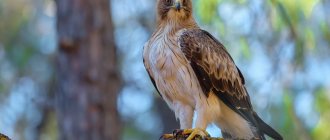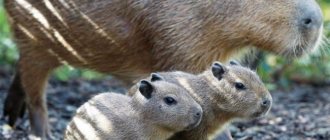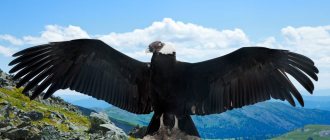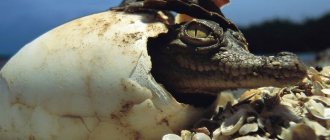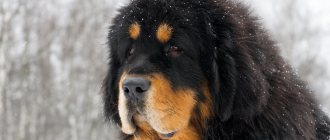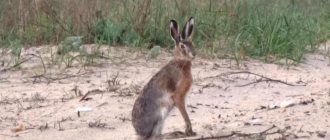Every child, starting in kindergarten, knows what a grasshopper looks like. But this stereotype is very misleading. There are more than 6 thousand species of grasshoppers and they look completely different. Some are similar to those depicted in children's books, others to those shown in horror films. There are even some that are indistinguishable from real leaves and have an incredible level of stealth. Grasshoppers live in a variety of places and can be found on almost all continents except Antarctica.
We invite you to get acquainted with the largest representatives of grasshoppers in the world, which can reach up to 15 centimeters in length. But with all this, even the largest grasshoppers do not look intimidating, and some are even kept at home.
Green grasshopper, 36 mm
Adult green grasshoppers can reach 28-36 mm in length. Although this is an average size of insects, among grasshoppers this species is included in the list of the largest.
They prefer to live in wet meadows, swamps, grassy thickets and forest edges. They feed mainly on other small insects. If they cannot catch such delicacies, they consume leaves, buds and flowers in large quantities. Cannibalism is sometimes observed.
There are no special features in the structure. They can be bright green or yellowish. This is exactly the familiar look that everyone knows, from young to old. Most often, these are the grasshoppers that are drawn in the encyclopedia for reference.
Grasshopper - external description, structure, chirping, color, nutrition + 80 photos
- There is probably not a single person on earth who has not heard the chirping of a grasshopper at least once in his life.
- Even kids can distinguish the peculiar sound of a grasshopper from other insects.
Description
The name grasshopper originates from the ancient Russian language - izok, meaning June.
More than 7,000 species of these insects are known, which are found in every corner of our planet except Antarctica. Apparently the harsh Antarctic climate was not to my liking.
Structure
External characteristics of the grasshopper:
- Body flattened on both sides;
- Head with large eyes;
- 3 pairs of legs;
- Mustache;
- Wings.
They move with the help of their front legs, and with the help of their more muscular hind legs, insects jump quite long distances. The length of the jump is 20 times greater than the insect's body.
The length of a grasshopper depends on the species and ranges from 1 to 5 cm, but there are some individuals whose size reaches 15 cm. Which is comparable to the length of a praying mantis.
The whiskers serve as the insect's sense of touch. An interesting fact is that the longer the length of the antennae, the higher the higher place the grasshopper occupies on the hierarchical ladder among its relatives.
- The wings have a direct function and help the grasshopper take off and fly short distances.
- Some subspecies have an additional pair of wings that perform a protective or safety function for the main wings.
Grasshopper chirping
- Any type of grasshopper has a peculiar chirping sound, but in most cases this sound is made by males.
- Only in some types of grasshoppers are females capable of producing musical sounds, because the wings of females are much weaker than those of the opposite sex.
- Due to this feature, females are simply not able to produce such a musical and expressive sound.
The basic wings with which the insect takes off have hard elytra.
In this case, one wing acts as a resonator, and the second acts as a bow.
Due to the vibration of the wings, a wonderful chirping sound is created, which is characteristic of a certain type of grasshopper.
Grasshopper color
The color of the insect will depend on the habitat in which it lives. That is why you can find green, brown and even striped colors.
One of the characteristics of the grasshopper is the location of its ears. They did not have enough space on their heads, like many representatives of other insects. Therefore, the ears are located on the front legs in the area of the lower leg.
In the same place are the eardrums, which perform their direct function. When the front legs are lost, hearing is correspondingly lost. Legs are especially precious to him.
How does a grasshopper live?
The lifestyle directly depends on the type of grasshopper and its characteristic features.
A common green grasshopper has a body length of up to 4 mm. This is believed to be the most common group.
As for orange grasshoppers, they were brought to us from China. You can only see them in greenhouses.
The largest grasshopper is considered to be the Giant Weta. It weighs about 80 grams.
- Ant - records, durability, species, castes, interesting facts + 91 photos
Grasshoppers are not pests for humans and agricultural land. And some peoples have long included these insects in their daily diet.
If a grasshopper feels threatened by a person, it may bite him. The bites received from this insect are quite painful, because it has a powerful jaw.
Some people like the grasshopper's singing, and in order to continue to listen to it constantly, people have come up with an artificial habitat for maintaining a home - insectariums.
Nutrition
Who would have thought, but such a small and charming insect in most cases, depending on the species, is a predator. It selects smaller insects for food.
- However, if the hunt was not successful, he does not mind eating young plants.
Reproduction
The beginning of reproduction depends on the habitat. In temperate climates, lovemaking begins in late spring or early summer. At this time, the males emit loud trills.
- At this point, they have seminal fluid in the form of a capsule, which is necessary for reproduction.
At the moment of reproduction, the male attaches a sticky bait - a capsule - to the female's abdomen. While she eats it, the liquid gradually enters her oviduct.
After fertilization, the female lays eggs on her own, which can contain from 100 to 1000 eggs. Then larvae appear, resembling a small grasshopper.
During growth, the grasshopper molts from 4 to 8 times. After the last molt, the insect waits until its wings get stronger. The insect lives only one season.
Grasshopper photo
Source: https://zelenyjmir.ru/kuznechik/
Grasshopper-leaf, 60 mm
This is an incredible insect that is very difficult to distinguish from a real leaf. It simulated not only color and shape, but even veins. For predators who want to feast on these insects, the task is almost impossible. He even disguised his paws, which look like dry twigs.
Of all the species of grasshoppers, and there are more than six thousand of them, this is perhaps one of the most unusual. The leaf grasshopper reaches 60 mm in length There are a lot of such subspecies with an incredible level of camouflage and they all reached this level through evolution.
Thick Pallas, 60 mm
The peculiarity of this grasshopper is very unusual; not only is it one of the largest, but it also cannot jump. It would seem that this is a distinctive feature of this type of insect, but Fat Pallas cannot raise his body high on such thin legs.
By the way, this is why he got his nickname and fully justifies it. Most often you can find them in Asia, but you can also see them in Russia. They are often kept at home. In the wild, they prefer plant foods, but they can also feast on the remains of other insects.
At home they are fed vegetables and fruits. The coloring is very interesting and not typical for grasshoppers. Dark brown with symmetrical light brown stripes. Everything about this insect is atypical for its fellows; it prefers to crawl away from danger rather than jump.
Features of the giant cricket
The color of the largest grasshopper is mainly brown. The upper (paired) jaws, mandibles or mandibles are very well developed in males; they not only grind food with them, but during the mating season they butt in the manner of stag beetles. Their main distinguishing feature is their hind limbs, which are very well developed and have spines. This weapon of death, which the weta throws with a strong jerk towards the enemy, has allowed the insect to survive to this day.
The families to which these Orthoptera belong are called Anostostomatidae and Rhaphidophoridae. These insects become sexually mature by 1.5 years of age. The female, at the cost of her life, lays 200-300 eggs; she, as a rule, is heavier than the male, but her heaviness is explained by the future offspring.
Spiny devil, 70 mm
The appearance of this grasshopper is striking, but it is thanks to its unusual needles that it can protect itself. It received such a terrible name precisely because of its unusual and intimidating appearance.
It is completely covered with needles. If predators or birds try to get close to it, it begins to wave its front legs and threaten with sharp spines. You can meet him along the Amazon and listen to the serenades he sings throughout the night.
Spiny devils feed on plant foods, but are not averse to eating other insects. It reaches 70 mm in length and is enough to repel its opponents. Also, to scare off his opponents, he came up with a cunning plan. When he sees that a predator is approaching him, he sharply raises his hind legs, which are brightly colored, and while the predator comes to his senses, he quickly crawls away.
Mormon, 80 mm
The appearance of the grasshopper is no different from the usual ones. The only thing is that the body is more round and it looks very “well-fed”. It is classified as a pest, as it often spoils garden plants. It lives in North America closer to pastures in order to eat plants planted by humans.
Mormon in length , and combined with its volume, it looks very massive. It can cover distances of more than two kilometers per day, despite the fact that this species does not fly.
5. Pseudophyllinae, 80 mm
This is a subfamily of grasshoppers that can reach a length of 30 to 80 mm. The appearance resembles leaves, including veins, twigs and even brown spots. It is almost impossible to distinguish them on the ground from real leaves. One can only envy such camouflage, because not every insect can camouflage itself from predators like Pseudophyllinae .
How to identify an insect?
In order to determine which superfamily an insect belongs to, it is necessary to know the description of its main body parts. Conventionally, it is divided into three parts - head, chest and abdomen. It is necessary to carefully examine and pay attention to the distinctive features of the insect, namely: the size, type and length of the antennae and limbs. To identify an individual, you can turn to an electronic identification guide, which will tell you how to correctly distinguish a grasshopper from a locust.
Tables for determination
The key consists of various tables in which the type of family members can be determined by complex external characteristics. Using these tables, you can easily identify the identity of the insect. The determinant indicates the characteristic features with the assignment of numbers. Numbers in brackets indicate opposite features. You can conduct a visual inspection of the insect and follow from one sign to another. For example, the presence of a mustache or other features.
By looking for external features, you can achieve your goal - to determine the species. Next to the name in Latin there will be an inscription with the name of the family in Russian. By clicking on the link, you can see a color image of the insect and specify the name. If the data that you found in the key matches the external characteristics of the insect, then the identification of the species of the individual (locust or grasshopper) can be considered successful.
Thus, it is not so difficult to correctly distinguish a pest from a predator found in a garden plot. Knowing the structural features of the body will help determine the species. If in doubt, you can use an electronic identifier to help identify the insect.
Giant Hueta, 100 mm
This species can be found in New Zealand. It reaches 100 mm in length and weighs more than 70 g. Such volumes make it very impressive and even intimidating. In the movie “King Kong” these particular grasshoppers were increased in size in the frames.
Of all insects, the Giant Weta ranks first in terms of weight. The paws are equipped with spikes, which adds even more creepiness. They live not only in forests, but also in open areas, in caves and even in cities. They are considered living fossils due to their long existence.
This type of grasshopper is listed in the Guinness Book of Records; there are not very many of them left and numerous rodents influenced this. Ueta is the collective name for insects from the order Orthoptera. All of them belong to two families and live in the New Zealand archipelago and adjacent islands.
The feat of a scientist
Despite the number of eggs laid, the number of weta is declining; there is evidence that they remain on only one island - Little Barrier. However, one can find the statement that the species is recovering and very strongly populating small islands, for example, the three islands in Cook Strait. The island of Mana deserves special attention, because it was there that the New Zealand zoologist Michael Meads caught several pairs of individuals sufficient to form a new population and transported them from to the remote island of Maud, where there were definitely no rats and one could count on a favorable outcome of the event. This was in 1977. The release of animals into the wild, into new and better conditions with the aim of forming a new population, is called reintroduction. In 1980, Meads discovered five weta on the island where he visited regularly. These were new individuals, since none of the ones he brought would have lived for three years. And then every year Meads found more and more of them. Thus, through the efforts of New Zealand scientists, a dinosaur from the genus Orthoptera was saved.
Giant long-legged grasshopper, 100 mm
Perhaps this is another one of the most unusual insects in the whole world. When he sits in your arms, you can compare him in size to a small kitten. The total length reaches 100 mm, but due to its long legs it looks much larger. They can only be found in the mountains, not far from Malaysia. They are well camouflaged and look like green leaves.
Despite the length of its legs, the Giant Long-legged Grasshopper prefers to crawl rather than jump. It feeds on plants, but may also eat other insects. It is active at night and obtains food only in the light of the moon.
Just an exaggeration
A publication sheds light on ways to draw attention to the enormous damage locusts cause to agriculture by publishing spectacular photographs. The names of photographers who are very professional and successful in such activities are given. About 7 million of the fabricated exaggeration postcards were sold in 1909.
The photographers' names are William Martin and Frank D. "Pop" Gonard. According to the author of the article, the last of the photographers cited is responsible for the sensational photograph “The Largest Grasshopper in the World.” More than one photo was taken, and many of them are preserved in the Metropolitan Museum of Art in New York. The postcards were produced by superimposing two different photographs taken on the same background. Taking into account reasonable comments, you believe that the replicated frame does not show the largest grasshopper. The year of “mass terror” of 1937 has nothing to do with this murder.
Steppe rack, 120 mm
This type of grasshopper can be found throughout most of Eurasia, but it is very difficult to spot it in its habitat. The steppe grasshopper prefers ravines and other hard-to-reach places.
It can be 120 mm in length, which makes it look very impressive. The color is green or slightly yellowish. It is most active at night; during the day it prefers to sit in tall grass and avoid predators.
Peacock grasshopper, 150 mm
This grasshopper has several names, but the most popular is peacock . It got its nickname because of its unusual appearance, which resembles a peacock's tail. This species was discovered quite recently, on an expedition in 2006.
He has two cunning defense plans. At first it looks like a fallen leaf, with its wings closed it is very difficult to distinguish. But if a predator approaches it, it opens its wings and begins to jump so that its eye patterns give the impression of a large bird.
The insect reaches a size of 150 mm and looks incredibly beautiful with open wings. Many butterflies use this pattern.
4 1
